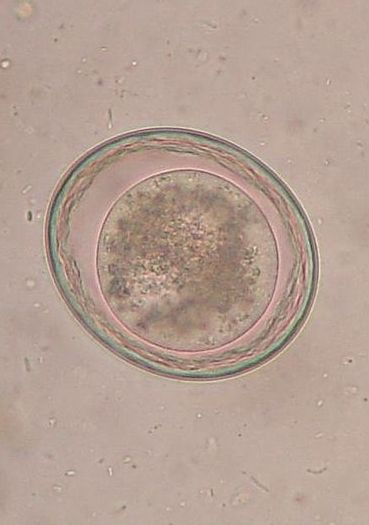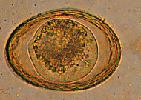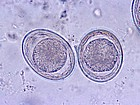Difference between revisions of "Category:Ascaridoidea"
Jump to navigation
Jump to search
(Created page with '{{unfinished}} == General Appearance == [[Image:Toxocara cati.jpg|thumb|right|150px|''Toxocara cati'' - Laboratory of Parasitology, University of Pennsylvania School of Veterina…') |
|||
| (8 intermediate revisions by the same user not shown) | |||
| Line 1: | Line 1: | ||
| − | {{ | + | {{frontpage |
| − | + | |pagetitle =Ascaridoidea | |
| + | |pagebody = | ||
| + | |contenttitle =Content | ||
| + | |contentbody =<big><b> | ||
| + | <br> | ||
| + | <categorytree mode=pages>Ascaridoidea</categorytree> | ||
| + | </b></big> | ||
| + | |logo = Toxascaris leonina logo.jpg | ||
| + | }} | ||
== General Appearance == | == General Appearance == | ||
[[Image:Toxocara cati.jpg|thumb|right|150px|''Toxocara cati'' - Laboratory of Parasitology, University of Pennsylvania School of Veterinary Medicine]] | [[Image:Toxocara cati.jpg|thumb|right|150px|''Toxocara cati'' - Laboratory of Parasitology, University of Pennsylvania School of Veterinary Medicine]] | ||
| Line 26: | Line 34: | ||
paratenic or intermediate hosts. | paratenic or intermediate hosts. | ||
| − | |||
| − | Occlusion of pancreatic ducts sometimes happens [[Pancreas Parasitic | + | Occlusion of pancreatic ducts sometimes happens [[Pancreas - Parasitic Pathology|Pancreas - parasitic]] |
| − | In [[Peritoneal Cavity Parasitic | + | In [[Peritoneal Cavity - Parasitic Pathology]] |
*''Parascaris equorum'' in [[Respiratory Parasitic Infections - Pathology#In Horses|rhinitis and lungs]] | *''Parascaris equorum'' in [[Respiratory Parasitic Infections - Pathology#In Horses|rhinitis and lungs]] | ||
| − | *Ascarid larvae in [[ | + | *Ascarid larvae in [[Parasitic Myositis#Nematodes|myositis]] |
| + | |||
| + | |||
[[Category:Non-Bursate_Nematodes]] | [[Category:Non-Bursate_Nematodes]] | ||
| + | [[Category:To_Do_-_Parasites]] | ||
Latest revision as of 23:02, 5 March 2011
Ascaridoidea
General Appearance
- Non-bursate
- Big fleshy worms; typically 5-40cm long (depending on age, sex and species)
- Three lips around the mouth
- A single-bulbed pharynx
General Life-Cycle
- Adult females in small intestine lay eggs
- Eggs have a thick protective shell
- Some also have a sticky outer albuminoid coat
- Eggs passed in faeces
- L1 → infective L2 inside the egg
- Infection is by ingestion of the embryonated egg (egg in which a larva has formed)
- Eggs can remain viable in humid environment for up to 5 years
- After hatching in the intestine, the larvae of most species (but not all) undergo hepato-tracheal migration:
- egg hatches in intestine → larva penetrates intestinal mucosa → hepatic portal blood → liver → venous blood → heart → lung capillaries → alveoli → ascends trachea → swallowed → small intestine (where the adults develop)
NOTE: there are important variations on this theme; for example, the migratory larvae of some species can cross the placenta or enter the mammary glands (examples of vertical transmission); while some species will utilise paratenic or intermediate hosts.
Occlusion of pancreatic ducts sometimes happens Pancreas - parasitic
In Peritoneal Cavity - Parasitic Pathology
- Parascaris equorum in rhinitis and lungs
- Ascarid larvae in myositis
Pages in category "Ascaridoidea"
The following 7 pages are in this category, out of 7 total.




